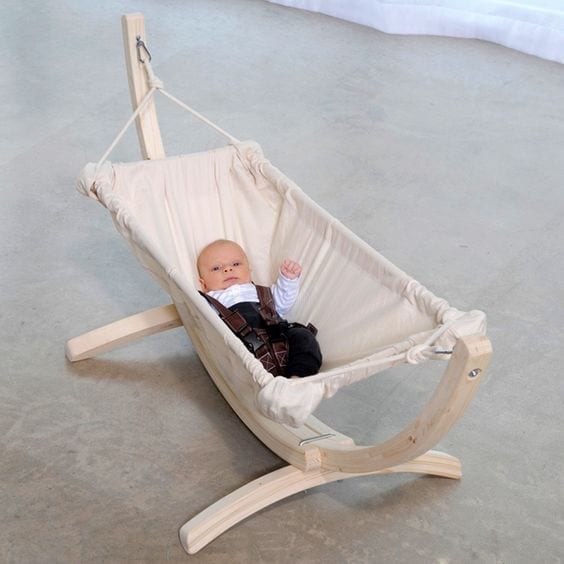An important new safety alert has been issued by the Consumer Product Safety Commission (CPSC) for parents who use baby hammocks with their babies. The scrutiny over the hammocks arose after “two newborns died in their sleep,” prompting regulators to propose new safety standards for not only baby hammocks but other products “where newborns sleep in an inclined position.”
An important new safety alert has been issued by the Consumer Product Safety Commission (CPSC) for parents who use baby hammocks with their babies. The scrutiny over the hammocks arose after “two newborns died in their sleep,” prompting regulators to propose new safety standards for not only baby hammocks but other products “where newborns sleep in an inclined position.”
Out of the products under fire, “some, like hammocks, are suspended in the air, while other seat-like products are meant to be placed on a level floor,” the CPSC described recently. Many of these products, “including six hammocks,” have been around for awhile, and some have even been recalled over recent years due to other tragic infant deaths. In fact, 14 babies have died in a baby hammock or other inclined product since 2005, according to the CPSC. In addition to those tragic deaths, “another 301 were injured, with more than half of the injuries resulting in flat head syndrome or twisted neck syndrome.”

Fortunately, parents around the country can breathe a sigh of relief, because the CPSC has discovered the problem with the products that are making them so dangerous. In particular, they “identified several hazard patterns linked to the baby sleeping products, including failed restraints that allowed babies to roll over and suffocate, as well as the growth of mold in the devices.” They’re also taking steps to remedy the problem by “proposing stronger safety requirements for these baby sleeping products.”
So what should parents do now? Well, there are many options available, including returning the product for a refund or simply discontinuing use of the hammocks and other products until the new safety standards are fully implemented.


Join the conversation!